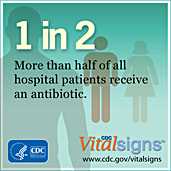Clinician Guide for Collecting Cultures
Ed Septimus, MD, FACP, FIDSA, FSHEA
Medical Director Infection Prevention and Epidemiology
Source: HCA Clinical Services Group, Nashville, TN
If possible cultures should be obtained before starting antimicrobial therapy; prior antimicrobial therapy may interfere with bacterial growth.
Blood cultures
- Disinfect bottle tops with 70% isopropyl alcohol (alcohol pad); clean puncture site with alcohol followed by chlorhexidine (CHG) and allow to dry
- For adults, collect 10-20 cc and 1-3 cc for a child for each blood culture set; divide blood into two blood culture bottles, one for aerobes and one for anaerobes; two or three blood cultures (by separate stick) per septic episode is sufficient.
- Laboratory confirmed bloodstream infection (not central line related)
- 1 positive blood culture with recognized pathogen from a venipuncture
- Skin organisms: >2 blood cultures drawn on separate occasions positive for the same organism plus clinical symptoms
- Laboratory confirmed bloodstream infection (not central line related)
- For suspected catheter-related bloodstream infection (CR-BSI) draw one set through device and one set from a separate venipuncture. Blood cultures from both line and venipuncture must be positive for same organism with clinical signs and symptoms and no other recognized source. A positive culture from the line only is probably a contaminant and should not be treated.
- Preferred Criteria for CR-BSI:
- Differential period of central line culture versus peripheral blood culture positivity > 2 hours
- Simultaneous quantitative blood cultures with a ≥5:1 ratio central line versus peripheral blood culture
- Alternative:
- Draw one set through device and one set from a separate venipuncture for routine blood culture
- Preferred Criteria for CR-BSI:
Intravenous catheter tips
- Remove aseptically and cut a ~4 cm segment from tip and place in sterile container; transport rapidly to prevent drying out;
- Semiquantitative culture of catheter tips is usually performed by rolling the tip across an agar plate; the presence of >15 colonies along with the same organism isolated from peripheral blood with clinical signs and symptoms and no other recognized source is consistent with a CR-BSI.
(Note: Determining if a BSI is a CR-BSI may be useful clinically. However, this definition of CR-BSI is not used for surveillance of CLABSI through NHSN. For the NHSN surveillance criteria, please refer to https://www.cdc.gov/nhsn/PDFs/pscManual/4PSC_CLABScurrent.pdf [PDF – 141.23 KB])
- Semiquantitative culture of catheter tips is usually performed by rolling the tip across an agar plate; the presence of >15 colonies along with the same organism isolated from peripheral blood with clinical signs and symptoms and no other recognized source is consistent with a CR-BSI.
- Comment: A positive catheter tip by itself is not diagnostic for a CR-BSI; Do not routinely culture catheter tips on removal unless there are clinical signs and symptoms for infection.
Wound/abscess
- Clean surface of wound or abscess with 70% alcohol and allow to dry; aspirate pus or fluid if possible and either transport in syringe(preferred) or place in anaerobic transport vial; anaerobic transport tubes are appropriate for aerobic and anaerobic cultures; always request a gram stain for initial guidance and comparison
- Swabs should be discouraged since swabs usually have insufficient material for gram stain and culture; if swabs must be used be sure quantity is adequate for both culture and gram stain
- Do not culture chronic superficial wounds or sinus drainage since superficial cultures correlate poorly with deep cultures-try an obtain a deep culture or biopsy for culture whenever possible
Sputum
- Have patient rinse with water to remove excess oral flora; instruct patient to cough deeply and collect and transport in a sterile container; microbiology should perform a cytologic screening specimens that are contaminated with oral secretions (presence of >10 squamous epithelial cell/LPF) and recommend re-collection if specimen is inadequate; gram stain should be performed on all sputum specimens
Tracheal aspirate
- Does not need to be screened like sputum; perform gram stain along with routine cultures; lab should report if specimen is purulent (>25 WBC/LPF)
Bronchial alveolar lavage (BAL) and mini-BAL
- Obtained by bronchosopy or with use of a special catheter(mini-BAL); requires prompt transport to the laboratory for processing; not acceptable for anaerobic cultures; fluid should be concentrated for optimal yield for stains and cultures; consider quantitative bacterial cultures to guide interpretation with >104 CFU/mL considered significant
Urine
- Midstream
- Instruct women to hold labia apart, discard the first portion of voided urine and collect midstream urine in a sterile container
- Instruct men to retract foreskin(uncircumcised), discard first portion of voided urine and collect in sterile container
- Catheterized
- Short-term collect specimen by aseptically aspirating from port of urinary catheter
- Long-term change urinary catheter: first change urinary catheter then collect specimen by aseptically aspirating port of urinary catheter
- Caution: straight cath for urine collection may result in iatrogenic UTI
- Transport: keep urine refrigerated and send to microbiology lab promptly; if significant delay is anticipated (e.g. regional lab) put urine in a tube with boric acid to prevent overgrowth of contaminating organisms
- Comment: Do not treat asymptomatic bacteriuria except in pregnancy or GU instrumentation
Stool
- Collect specimen in a sterile container and transport promptly to microbiology lab; notify micro if a specific pathogen suspected (e.g. Vibrio, Yersinia, E. coli O157:H7, C. difficle)
- Comments:
- In general do not process for bacterial pathogens if patient develops symptoms more than 3 days after admission; consider C. difficile for hospitalized patients with diarrhea
- Multiple specimens per day are not indicated
- Formed stools in general should not be submitted
CSF
- For bacteria send 1-2 mL for bacteria; if mycobacteria or fungi suspected send 5-10 mL
- Comments
- In general for initial evaluation, send CSF for cell count, glucose (also draw simultaneous blood glucose), and protein with gram stain and bacterial culture
- Do not routinely order bacterial antigens, AFB, and fungi, or PCR for herpes until initial results from routine studies are available; drawing an extra tube to save for additional studies pending initial results is more appropriate and cost effective
- Page last reviewed: April 7, 2015
- Page last updated: April 7, 2015
- Content source:




 ShareCompartir
ShareCompartir